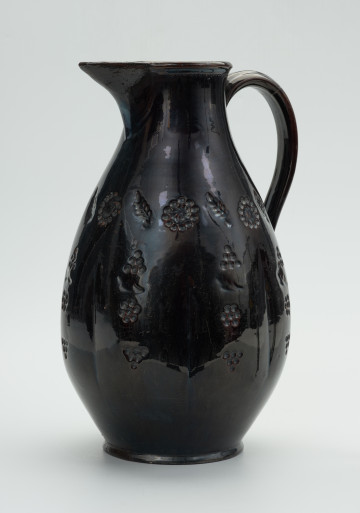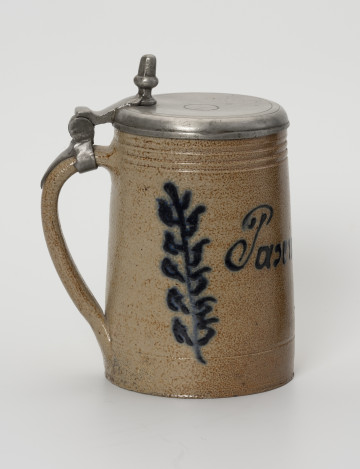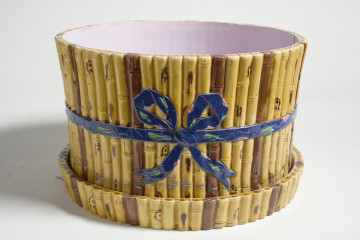
Jug
połowa XIX wieku
National Museum in Szczecin
Part of the collection: Material culture of West Pomerania
Jugs are practical everyday vessels that have been used by people for centuries. Kazimierz Moszyński in his Kultura ludowa Słowian stated that „they were widespread, but not everywhere they took the same form”. In some places in Slavic lands, jug-shaped vessels made of staves with beaks made from knots were used. Clay jugs made in pottery workshops, like other folk ceramics, had primarily a utilitarian function. Their decorative values were secondary. They were used for transportation and storage of food (not only liquid but also loose foods) and as tableware. The Polish language has many expressions with the word „jug”. Apart from the one commonly known, which can be translated as „a jug carries water until its handle is broken”, there is also one interesting prober reminding about the importance of completing certain work in the field within a specified time, i.e., „he who sows barley on St Urban’s day shall drink beer from the jug”. In the collection of the Department of Ethnography of the Pomerania of the National Museum in Szczecin there are about 100 different jugs and pitchers. The large, clay, enamelled jug presented here comes from the first half of the 20th century. It was made using the pottery wheel, the main pottery technique. It has a brown coating on the inside and a green one on the outside and is additionally decorated with an inlaid, „typical folk” green and yellow herringbone and flower pattern. The jug was used to store liquids. It was gifted to the museum in 1974.
Agnieszka Słowińska
Author / creator
Dimensions
cały obiekt: height: 29,4 cm
Object type
vessel (container)
Creation time / dating
Identification number
Location / status

połowa XIX wieku
National Museum in Szczecin

1840 — 1860
National Museum in Szczecin

2nd half of the 19th century
Castle Museum in Łańcut
DISCOVER this TOPIC
National Museum in Lublin
DISCOVER this PATH
Educational path